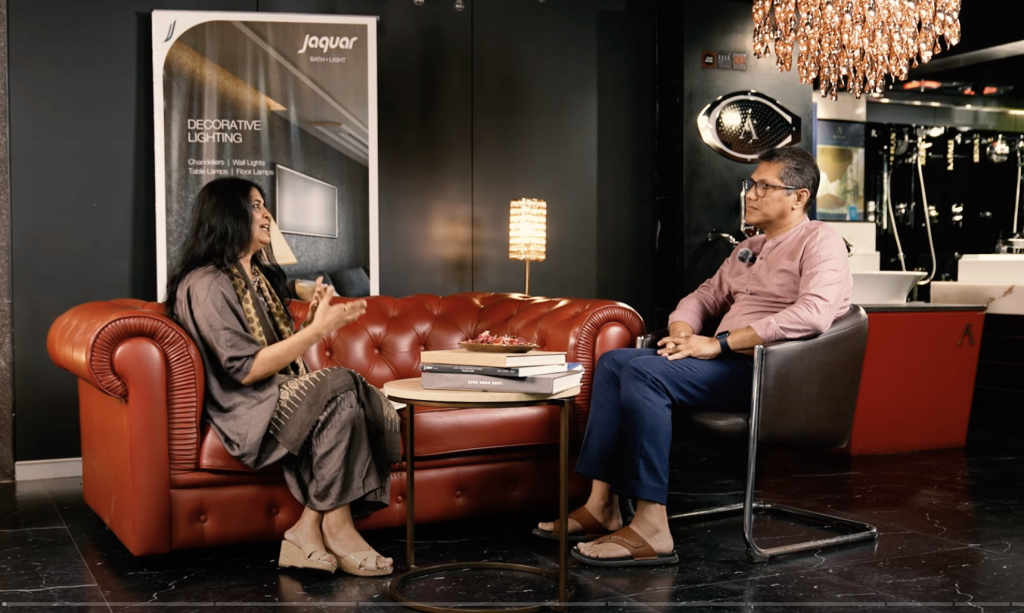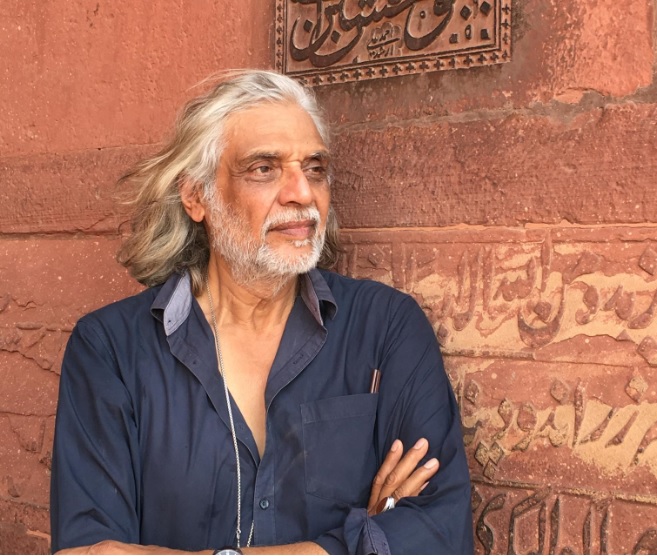Welcome to Samvaad, where art meets conversation, and inspiration knows no bounds. Here we engage in insightful conversations with eminent personalities from the art fraternity. Through Samvaad, Abir Pothi aims to create a platform for thought-provoking discussions, providing readers with an exclusive glimpse into the creative processes, inspirations, and experiences of these creative individuals. From curating groundbreaking exhibitions to pushing the boundaries of artistic expression, our interviews shed light on the diverse perspectives and contributions of these art luminaries. Samvaad is your ticket to connect with the visionaries who breathe life into the art world, offering unique insights and behind-the-scenes glimpses into their fascinating journeys.
In this Samvaad Ruby Jagrut, the esteemed founder of Abir India Charitable Trust and an accomplished artist, engages in a conversation with Pankaj Pukhan, a prominent architect at Pankaj Phukan & Associates in Ulubari, Guwahati. With a legacy spanning back to 1995, Pankaj’s firm has earned a sterling reputation for delivering exceptional experiences to its clientele, rooted in a steadfast commitment to customer satisfaction. Throughout this engaging discussion, we look into Pankaj’s remarkable journey, from his family background to his illustrious career experiences in the northeastern city of Guwahati. We will discover the intricacies of studying clients and Pankaj’s unique work process as he shares invaluable insights garnered from his extensive experience in the industry. We will also look into the deep bond between Pankaj and his work as he shares heartfelt experiences, such as the endearing “Dadaji story,” that demonstrate the significant impact of art on his life. Examine Pankaj’s viewpoint on the mutually beneficial interaction between the people of Assam and the art world as well as his motivational advice for ambitious young designers.
Ruby: So, just before we started this interview, we talked about the Itanagar project where you felt that this project needed to belong to this place, and you changed your entire process of design. You brought in a lot of local art. So, talk about that experience. Take us to that experience.
PP: That is all under the facade of the building. So, the interior space, being a technical building, we couldn’t do much to accommodate this local cultural aspect. But under the facade, we did all the cleaning work. We did some masking, that looks like an all-natural building and that has the elements of the architecture of Arunachal Pradesh – those cornices and all those things, those elements on the top of the roof Those sloped roofs. That was a flat-roof building, but we camouflaged that building with some sloped roofs.
Ruby: Okay just to give that feel and flavour of the region. Yes! Have you ever worked with a senior artist or a sculptor, and just for a project, collaborated with any senior visual artist?
PP: My Dada ji. His name was Padum Buragohain he was a international artist.
Ruby: Yesterday uh even that lady she also mentioned the name of Guwahati senior artist I think she mentioned your Dadaji.
PP: He’s no more. He was the founder and principal of Guwahati College of Art. He is the founder of the Guwahati Artist Guild. I took that opportunity to work on some projects with him. I did some entrance gates where he did sculptural works. Sculptures, I did the structural part of that, That is how I was being, but at that time I was very young.
Ruby: You’re still very young. So, you have worked in collaboration with your Dada Ji, who is a prominent artist and a significant figure in the art world of this region. You have that means you already have a relationship with art, and you believe in the relationship between art and architecture. You believe in that marriage. So, when we talk about art in a project, when does the art come into your project? During the design, or at the end of the project, have you identified a few spaces where art should be? Some art in, around this corner? When does this art part come into your process?
PP: See, if the objective of creating the building is cultural, then definitely I seek the help of the artist right at the beginning. Because he needs some surfaces, he has his vision, yes. So, I have to respect the vision of my artist. Because, unlike other consultants like structural, and plumbing consultants, I cannot treat my artist in that category. Yes, because I cannot direct them or guide them. In some cases, I have to take guidance from my artist, of course. So, I do have that respect, because that is in my blood.
Ruby: Yeah, it’s in your blood, and you’ve seen it at a very young age, and it is very rare, I must tell you. What you are saying is very rare because we also work with a lot of architects, and they want the art to be replicas of their thought process and not the artist’s expression. Anyway, so you have worked with senior artists, and you have worked very closely with other artists as well. You said you give an immense amount of freedom for them to express themselves, and it is a very beautiful thing to hear because we don’t get to hear such things very often. So, I’m very glad that I’m interviewing you today. And as you work with senior artists, you already mentioned, have you worked with any young contemporary artists in recent times?
PP: I have worked with Mr. Rintu Kharghoria, he’s an artist. Okay, so I did some landscape projects where he did this cultural work on the boundary walls. Okay, so some artwork over there. That is Shanti Sthal, that is the Samadhi of the first Chief Minister of Assam, Gopinath Bordoloi. The airport is named after him. Yeah, your airport is on his name, so I made his Samadhi Sthal. So, over there, he worked with me.
Ruby: Okay, can you share about some artwork or an art artist whose work has stayed with you for a long time, or which was maybe a very moving experience or a very engaging experience for you? Of course, your Dadaji’s work.
PP: Of course, my dadaji’s work while going to Upper Assam, the Kaziranga. Okay, there is a government resort over there where you still can still see a rhinoceros. Okay, it’s a big rhinoceros over there, so that was made by my Dadaji. When we were kids, okay, my father, my parents used to just stop the car and always just every time we had to see we had to go to that, yeah, rhino. We enjoyed that from all sides of the rhino. Okay, so was something that printed on my mind and remained with you still today, still today.
Ruby: Wow, so I think because you have an emotional connection with that art, you know, and because you have an emotional connection with your dadaji, of course, it’s going to be one of the most memorable moments as a child, you know, when you’re looking at the rhino from all sides. But what we have noticed in recent times, like in Chicago, there’s an art called the Cloud Gate, this huge sculpture by Anish Kapoor. We changed the way Chicago behaves. That’s the power of art. That’s the power of interactive sculpture. Do you see those kinds of possibilities, those kinds of possibilities in our country or in this region where that’s in public spaces, we can see such kind because you work with the government closely. I’m asking you a question. You’re the right person to answer this question because you are very close to the system and working with the system. Do you see those kinds of possibilities in our country, in your region where such kind of public art can take place?
PP: Believing, art needs some emotions in you. And people in this part of the country, are very emotional. Assamese people you will find they are most emotional and impractical. I believe they are impractical because they are emotional. So, emotional people always love art. So, this place has ample opportunity and potential to explore art. To bring art to the public space, to bring people from inside of the building to outside the building. So to interact. See, we have auditoriums. But we have amphitheatres. We need open space, yes, where you can interact, where these artists can play a vital role, yes, to bring society closer. Because Assam, again, you see, this has got this is a combination of a lot of tribes, yes, having different languages, different cultures. So if we, if this is only an architect, not even the architect, only an artist can do, yes.
To be continued….





